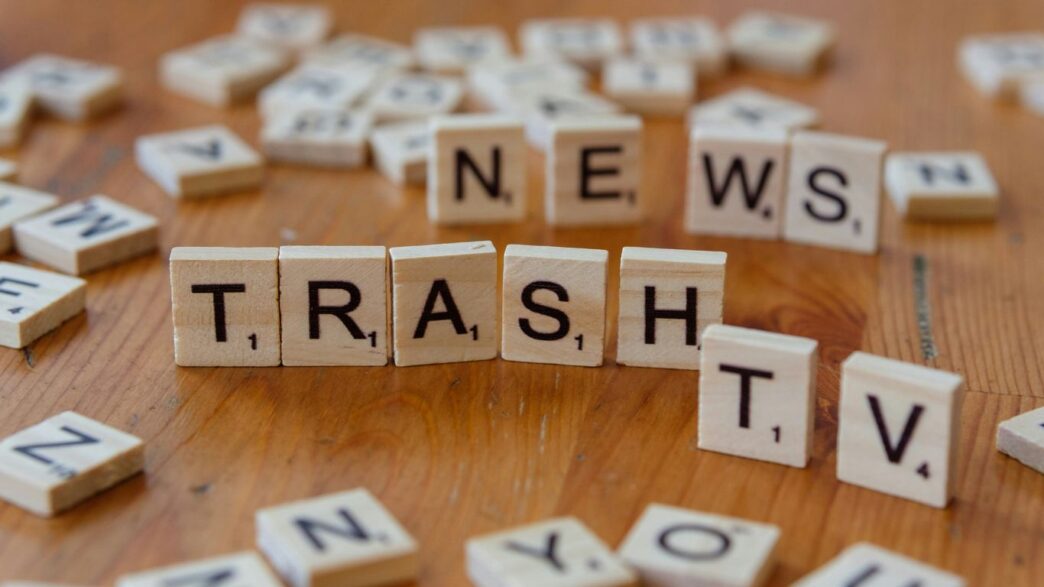So, you’re wondering if Mashable is a site you can count on for your news fix, especially when it comes to tech and pop culture? It’s a fair question. In today’s online world, figuring out who to trust can feel like a minefield. We’re going to take a good look at Mashable, checking out their articles, how they handle sponsored stuff, and what others think, to help you decide if they’re a reliable source for information. Let’s get into it and see if Mashable is trustworthy.
Key Takeaways
- Mashable’s non-sponsored content is generally okay, but it’s best to check it yourself, especially if it’s about something outside their usual tech and pop culture focus.
- When Mashable publishes sponsored content, pay extra attention to make sure their own writers created it, not the company paying for it.
- Mashable often uses a casual writing style, which might affect how seriously people take their articles.
- Looking at how other sites similar to Mashable handle their news can give you a better idea of Mashable’s own reliability.
- How a website looks and how many people interact with it online can really influence whether readers think it’s trustworthy, even if that’s not always a good measure.
Understanding Mashable’s Editorial Stance
So, how does Mashable actually operate when it comes to what they publish? It’s not always a straightforward answer, and it really depends on what you’re reading.
Consensus on Non-Sponsored Content
When it comes to the articles that aren’t marked as sponsored, there’s a general agreement among editors that Mashable is usually okay to use as a source. However, this doesn’t mean everything they publish is gold. A key point that comes up is their writing style. It tends to be pretty informal, which is fine for some topics, but might not be ideal for more serious news. Think of it like this: you wouldn’t expect a formal academic paper to be written in the same way you’d text a friend, right? It’s similar here. Because of this, it’s often recommended to look at non-sponsored content on a case-by-case basis. This is especially true if the topic is something outside of their usual focus, which is mostly tech and pop culture.
Evaluating Content Outside Mashable’s Niche
This brings us to the idea of their niche. Mashable really carved out its space in the tech and pop culture world. When they stick to that, they generally know what they’re talking about. But what happens when they venture into other areas? That’s where things can get a bit shaky. If Mashable suddenly decides to write a deep dive on, say, international finance or complex scientific research, you might want to be a little more skeptical. Their usual sources and the expertise of their writers might not be as strong in those unfamiliar territories. It’s like asking a movie critic to review a new restaurant; they might have some good ideas, but they aren’t the go-to expert.
The Role of Niche Focus in Reliability
Ultimately, a publication’s focus plays a big part in how reliable it is. For Mashable, their strength lies in covering the latest gadgets, internet trends, and entertainment news. They’ve built a reputation and a team that understands these areas well. This focus allows them to be quite timely and often insightful within their chosen fields. However, when they stray too far from this core, the reliability can dip. It’s not that they’re intentionally trying to mislead, but rather that their established editorial strengths are in specific areas. So, while they might be a go-to for the newest smartphone review, they might not be the best place for breaking political news or in-depth economic analysis. It’s always good to consider the source’s background when you’re reading anything online, especially when it comes to news and current events.
Scrutinizing Mashable’s Sponsored Content
Okay, so let’s talk about the sponsored stuff. This is where things can get a little murky, right? When a site like Mashable puts out content that’s paid for by an advertiser, we’ve got to be extra careful. The big question is, who actually wrote it? Was it Mashable’s own team, or did the sponsor just hand over a piece of text and call it a day?
Ensuring Staff Authorship
It’s really important that the articles we read are actually put together by Mashable’s writers. This means they’re following Mashable’s own editorial guidelines and not just pushing a product or service because they were paid to. We need to see bylines that clearly indicate Mashable staff. If it looks like it was written by someone from the company paying for the ad, that’s a red flag.
Distinguishing Between Sponsored and Editorial Content
This can be tricky. Sometimes, sponsored posts look exactly like regular articles. They might use the same layout, the same tone, and even have a similar headline style. It’s like a wolf in sheep’s clothing, you know?
Here’s what to look out for:
- Clear Labels: Look for terms like "Sponsored," "Paid Post," "Advertisement," or "Partner Content." These should be obvious, not hidden in tiny print.
- URL and Domain: Sometimes, the URL might give a clue if it’s a specific campaign.
- Tone Shift: Does the article suddenly sound like a sales pitch? That’s a big hint.
Potential for Sponsor Influence
This is the core concern. If a sponsor has too much say in the content, the information might not be objective. They might want to highlight only the good stuff and ignore any downsides. We need to assume that sponsored content is inherently biased towards the sponsor’s goals. It’s not necessarily unreliable in terms of basic facts, but it’s definitely not neutral reporting. Think of it like getting a recommendation from a salesperson versus a friend who’s used the product – there’s a different agenda at play.
Mashable’s Writing Style and Tone

When you land on Mashable, the first thing you might notice is how it feels to read. It’s not like reading a dry academic paper, that’s for sure. They tend to go for a more casual, conversational vibe. Think less stuffy news report and more like chatting with a friend who’s really into tech and pop culture.
Informal Writing Tendencies
This informal style is pretty consistent across their articles. They use shorter sentences sometimes, throw in some slang, and generally avoid overly complex language. It makes the content super accessible, which is great if you’re just trying to get the gist of something quickly. It’s like they’re trying to be relatable, you know? For instance, they might talk about a new gadget like it’s the next big thing everyone’s buzzing about, rather than just listing its specs. This approach can make even complex topics feel less intimidating. It’s a big part of their brand, really.
Impact of Tone on Perceived Trustworthiness
Now, does this casual tone affect how trustworthy people think Mashable is? That’s where it gets interesting. For some readers, this friendly approach builds a connection. It feels more genuine, less corporate. They might trust a site that talks to them like a person. However, for others, especially those looking for deep, serious analysis, this informality might come across as less authoritative. It can sometimes feel like they’re prioritizing engagement over strict factual reporting, even if that’s not always the case. It’s a balancing act, for sure. The way a site presents itself, tone included, really shapes how readers perceive its credibility.
Audience Perception of Mashable’s Style
So, how does the audience actually see it? Generally, Mashable’s target audience seems to dig the style. People who are into the latest tech trends, internet culture, and entertainment often appreciate the energetic and approachable writing. It fits right in with the fast-paced online world. It’s probably why they’ve stuck around for so long. They’ve figured out a way to talk about things that matter to their readers without putting them to sleep. It’s a different approach than, say, a publication focused on hard-hitting investigative journalism, but it serves its purpose for the topics they cover. If you’re looking for quick takes and digestible news on the digital world, their style likely works for you. For example, when discussing something like the Humane Ai Pin, they’d likely focus on the user experience and the buzz around it, rather than just the technical specs.
Comparing Mashable to Other Tech and Pop Culture Outlets
Reliability of Similar Niche Publications
When we look at other sites that cover similar ground – you know, tech stuff and pop culture – it’s a mixed bag. Some places are pretty solid, others, not so much. Take IGN, for example. It’s generally seen as reliable for gaming news. Then you have sites like Dexerto, which editors often flag as more of a tabloid. They might have some useful info sometimes, especially on esports, but you’re usually better off looking elsewhere if you want solid facts. Digital Spy, on the other hand, gets a nod for being generally reliable when it comes to entertainment and pop culture news. It really comes down to what you’re reading and who wrote it.
Identifying Potential Biases in Tech Reporting
Tech reporting can be tricky. A lot of these sites, Mashable included, have to make money somehow, right? Sometimes that means sponsored content, which we’ll get into more. But even with regular articles, there’s always the question of who they’re friendly with. For instance, CNET had some issues with how they handled AI-generated articles and affiliate links, which definitely makes you wonder about their motives. And then there’s CoinDesk, which editors suggest avoiding if you can find more mainstream sources, partly because of potential conflicts of interest with their parent company. It’s like, are they telling you about the tech, or are they telling you about the tech because someone paid them to?
Case-by-Case Evaluation of Pop Culture News
Pop culture is a wild area. Sites like MEAWW are often called out for being unreliable and using clickbait. So, if you see something there, you probably want to double-check it somewhere else. Digital Spy is usually okay for this stuff, but even then, you have to think about whether the information you’re reading is getting the full picture or just a slice of it. It’s not always black and white. You really have to look at each article and ask yourself if it feels right, if it’s backed up, and if it’s coming from a place that seems fair. Basically, don’t take anything at face value without a little digging.
External Assessments of Mashable’s Reliability

So, what do other folks think about Mashable’s reliability? It’s not always a clear-cut answer, and honestly, it depends on who you ask and what kind of content you’re looking at.
Analysis from Media Bias/Fact Check
When we look at places that try to rate news sites, Media Bias/Fact Check (MBFC) is one of them. However, it’s worth noting that MBFC itself has faced some questions about its own methods. Editors have apparently questioned how they come up with their ratings. So, while MBFC might offer an opinion, it’s not necessarily the final word.
Editor Consensus on Mashable’s Practices
Looking back at discussions, like a Request for Comment (RfC) from 2021, editors seemed to agree on a few things. For regular articles, not the sponsored kind, Mashable is generally seen as okay. But, they do tend to write in a more casual style, and their main focus is on tech and pop culture. This means that if they write about something outside their usual topics, you might want to look at it a bit more closely. It’s kind of a case-by-case thing.
When it comes to sponsored content, the consensus was that extra care is needed. The big concern here is making sure the articles are actually written by Mashable’s own staff and not just by the company paying for the ad. It’s about keeping that line clear between real reporting and paid promotion.
Historical Reliability Trends
It’s tough to give a simple score for historical reliability. Like many online publications, Mashable has evolved. What was true a few years ago might not be exactly the same now. The general feeling seems to be that while their core content is usually fine, the informal tone and specific niche focus mean readers should stay aware. It’s not about outright distrust, but more about understanding the source and its potential leanings or focus areas.
Factors Influencing Reader Trust in Online Content
So, how do people actually decide if they can believe what they’re reading online? It’s not always about deep dives into journalistic ethics, you know? A lot of it comes down to quick judgments and what’s right in front of them. When you’re scrolling through a million things on your phone, you don’t have time to fact-check everything. You just don’t.
The Impact of Social Media Metrics
Think about it. You see an article shared on social media, and it’s got thousands of likes and shares. What’s your first thought? Probably that a lot of people found it useful or true, right? It’s like a digital nod of approval. This collective action, seeing others engage with content, acts as a shortcut for us. It signals that maybe, just maybe, this information is worth paying attention to. It’s not foolproof, of course, but it’s a powerful nudge.
- Likes and Shares: A high number suggests popularity and potential credibility.
- Comments: While not always positive, a lively discussion can indicate engagement.
- Authoritative Accounts: If a trusted figure or organization shares it, that adds weight.
Brand Reputation and Familiarity
Sometimes, it’s just about the name. If you’ve heard of a website before, even if you don’t remember much about it, you might lean towards trusting it more than some random link. It’s like seeing a familiar brand in a store – you know what to expect, more or less. But this can be tricky. If your past experiences with a brand weren’t great, that familiarity can actually work against them. People tend to fall back on what they already know about a brand, and that knowledge isn’t always positive.
User Judgments Based on Website Presentation
How a website looks and feels matters. A lot. Even if the content is solid, if the site looks janky, full of annoying pop-up ads, or just generally unprofessional, people get suspicious. They might judge the information based on these visual cues. Things like:
- Website Design: Is it clean and modern, or does it look like it’s from 1999?
- Images and Videos: Are they relevant and high quality, or blurry and out of place?
- Advertising: Is it overwhelming and intrusive, or subtle and non-disruptive?
Basically, if a site doesn’t look like it’s put together well, readers might assume the content isn’t either. It’s a quick, often unfair, assessment, but it happens. And then there’s the content itself. If an article is labeled ‘breaking news’ but nothing really happened, or if it’s an old story being presented as new, that’s a fast way to lose trust. It feels like you’ve been tricked, and nobody likes that.
So, Is Mashable a Go-To Source?
After looking into it, Mashable seems like it can be a decent place for quick reads on tech and pop culture. Think of it like a friendly chat about the latest gadgets or what’s trending. However, it’s not really the place you’d go for super serious, in-depth news, especially if it’s outside their usual topics. They tend to keep things pretty casual, and sometimes that means you might miss some finer details. Plus, if you see anything that looks like an ad, you’ll want to be extra careful. It’s best to use Mashable as a starting point or for lighter stuff, and always double-check important facts with other, more established news outlets.














